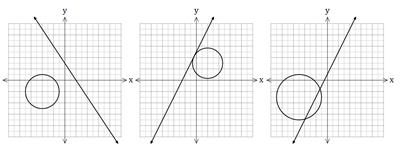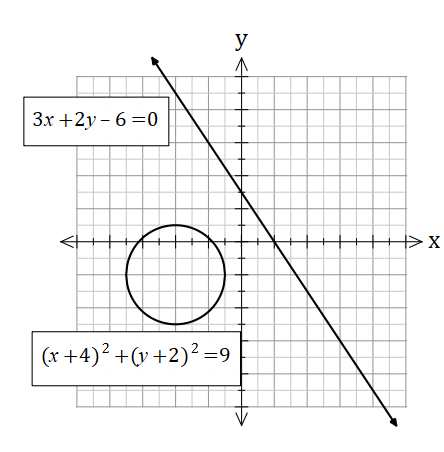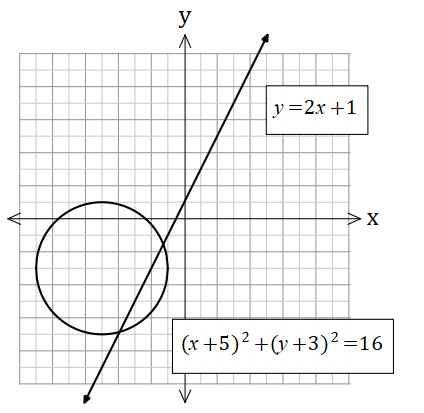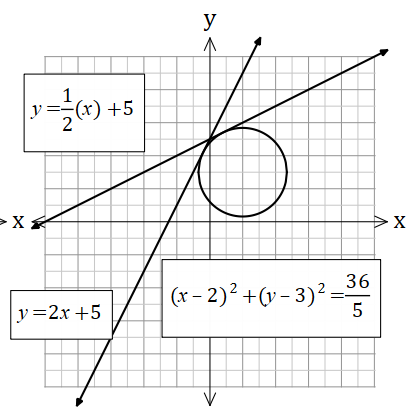
Once my students have studied circle and quadratic equations, I like to introduce lines intersecting with circles. It tests their quadratic equation solving skills, and if they can use the discriminant.
Example 1
Calculate the point(s) of intersection of
![]()
Rearrange the line equation
![]()
![]()
Substitute for y into the circle equation
![]()
![]()
![]()
![]()
![]()
At this point I like to check the discrimnant
![]()
![]()
![]()
As the discriminate is less than zero, there are no points of intersection.

Example 2
Calculate the point(s) of intersection of
![]()
![]()
![]()
![]()
![]()
Check the discriminant
![]()
![]()
Therefore there are two points of intersection
![]()
![]()
![]()
![]()
Substitute x into y
![]()
![]()
![]()

Example 3
Find the value of k so that the line and the circle intersect at one point (i.e. the line is a tangent to the circle)
![]()
![]()
![]()
![]()
![]()
![]()
Find the discriminant (remember for one solution we want the discriminant to be zero)
![]()
![]()
![]()
![]()
![]()
![]()
![]()
![]()
![]()
![]()
![]()

